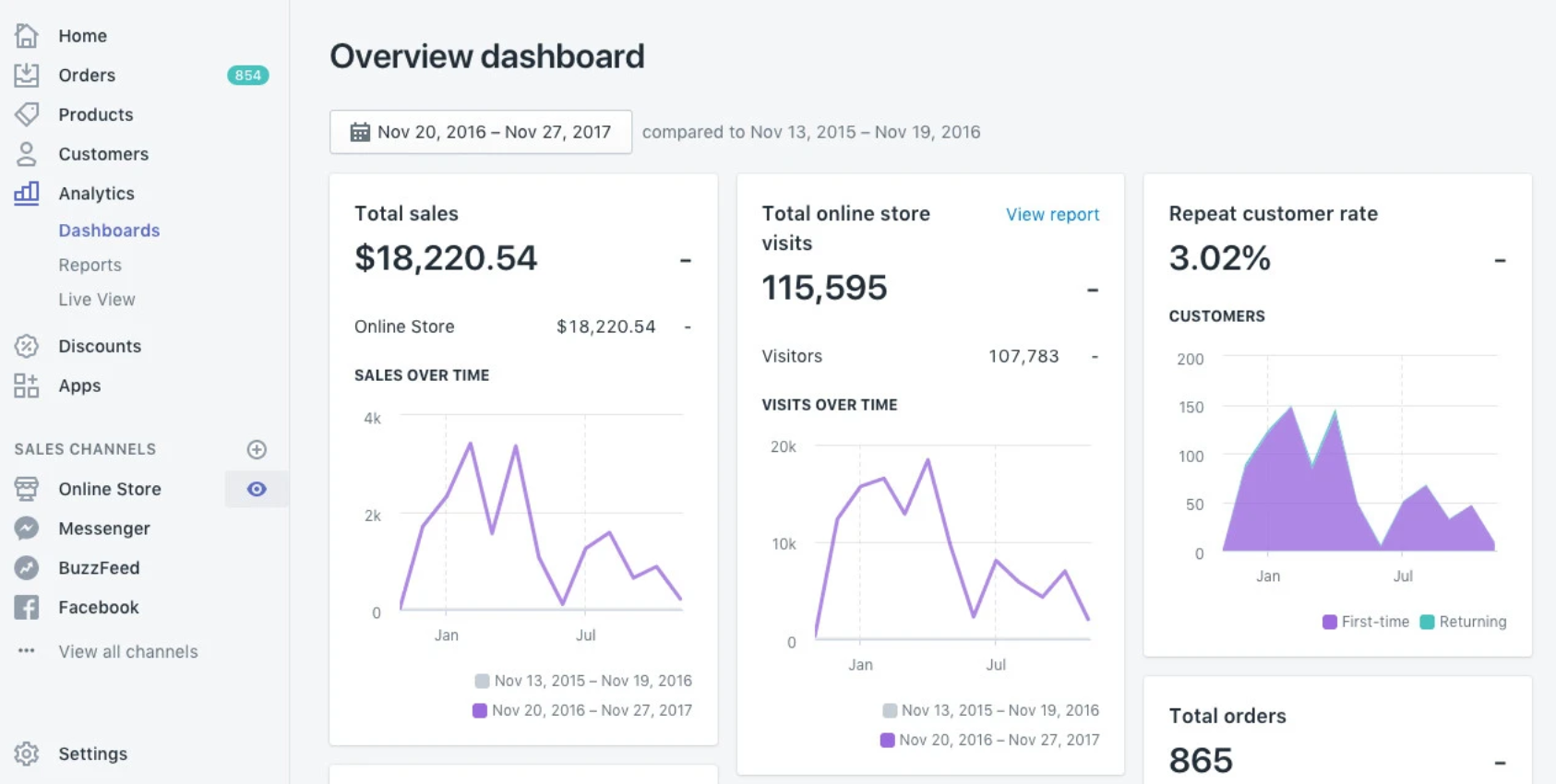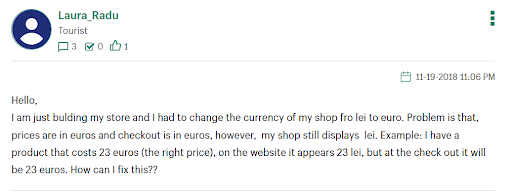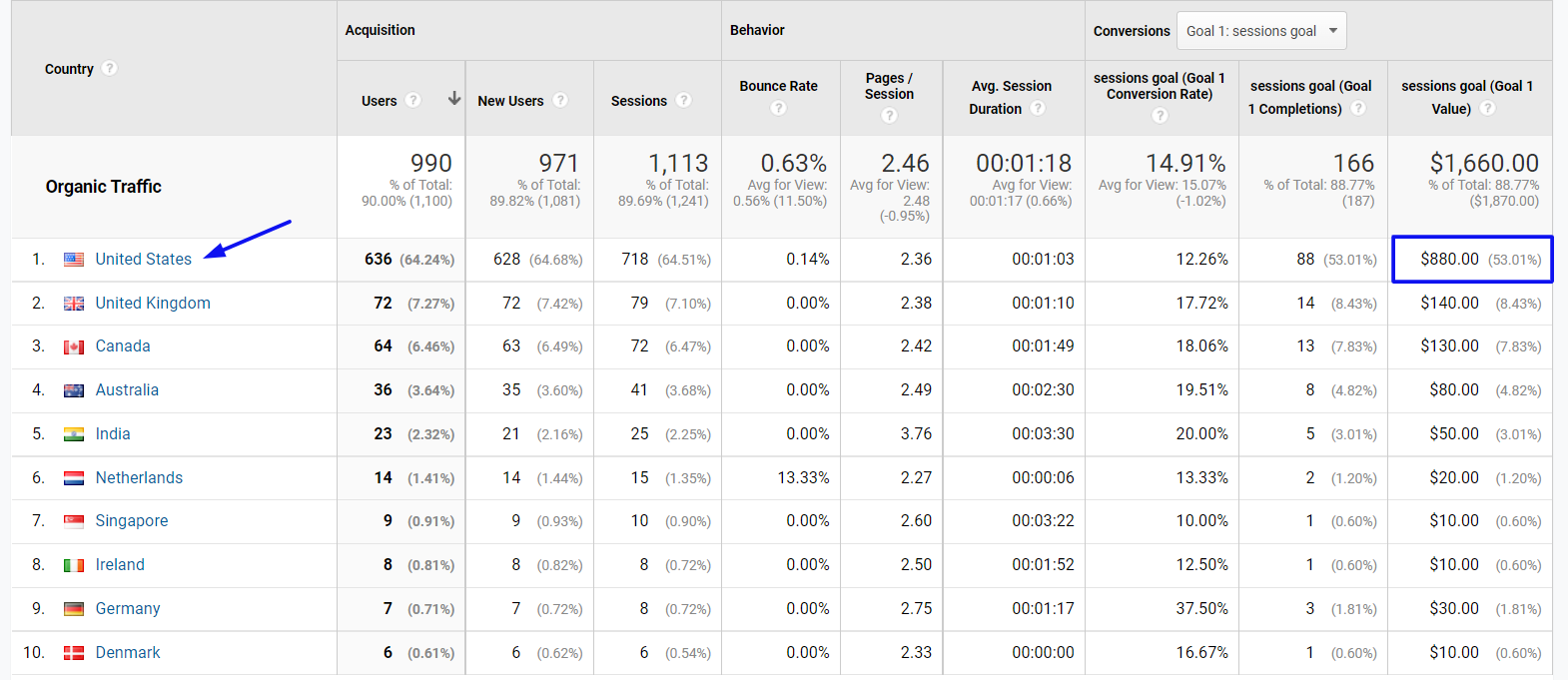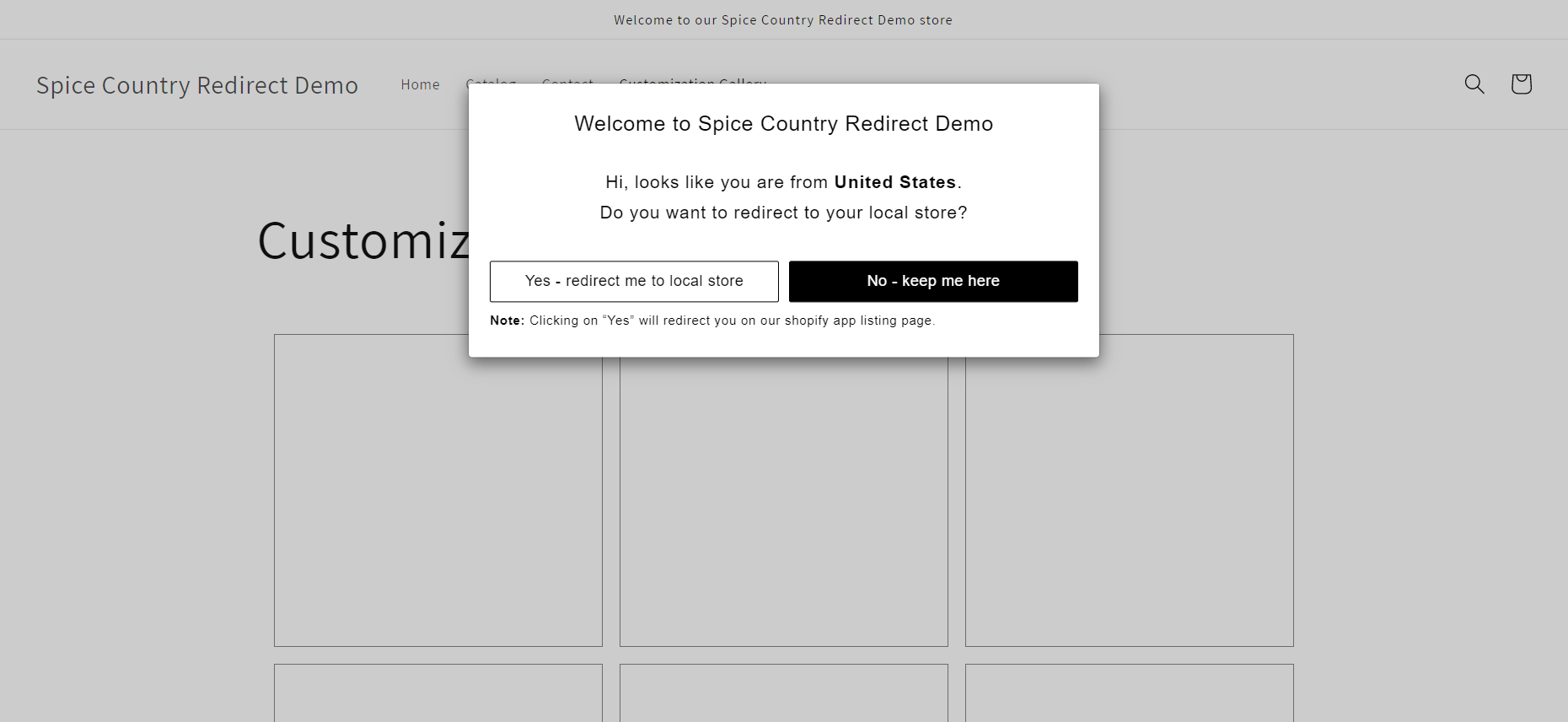Shopify Internationalization: Shopify Markets Or Alokai (Formerly Vue Storefront)?

Your Shopify store is growing, and you want to go global now. But you wish it was any simpler.
Here’s what Shopify says…
While we believe Shopify has done exceedingly well in providing internationalization features concerning other competitors in the market, we somehow feel there’s still a long way to go.
Here’s why we say this:
Did you see it? Now it’s not that you can’t fix these currency issues on Shopify. You can! But you don’t get the ideal merchant experience that anyone would expect from one of the largest e-Commerce builders in the world. Before we cover the unsatisfying experience with Shopify’s internationalization, let’s first find out what it is and its benefits.
What is Shopify Internationalization?
Shopify internationalization is a method to sell to international customers. The method empowers merchants with multiple currencies and languages to create international Shopify stores for their ideal audience. A merchant can present content in multiple languages with separate URLs.
What are the benefits of Shopify Internationalization?
The benefits of Shopify’s internationalization are:
Wider exposure
Many people like to buy with the local stores that look, feel, and speak their cultures. You can
- expose your business to a broader audience
- increase sales by producing international websites and products
- brand yourself in their mother tongue and currency
Non-expensive appeal
International rates and shipping produce expensive appeal. Shopify internationalization lets you target a whole new market.
Low cart abandonment
Since people like to spend in their local currencies, internationalization helps them pay in their favorite currencies. This way, they don’t have to calculate the conversion rates all the time and won’t fear conversion charges anymore. Not being able to pay in the favorite currency is one of the biggest reasons for cart abandonment.
Improve marketing campaign ROIs
Instead of putting your SEO and ad campaigns to a broader market, internationalization lets you laser target specific locations and brings better conversion. For example, you can focus on their lingua and currencies for a German market and adapt your marketing efforts around them.
Global business at a cost-effective price
You don’t have to open a shop in the international market to expand. Shopify internationalization lets you test the water with a multi-lingual and currency store.
Local language = brand identity
If you can speak the language of your target audience, your brand recognition will go global. Shopify internationalization allows you to speak the same language your audience does. They associate your brand with their culture. You don’t speak to the cloud. They don’t speak to the wall.
How do you determine if you need Shopify internationalization?
You can determine if you need Shopify internationalization by answering a few simple questions.
- Does your store already generate profitable income? If your store generates more than $8000 to $10000, you can think in the internationalization direction.
- Are you getting international traffic, leads, and sales at the global level? You can check data with your Google Analytics account or any SEO tool such as SEMrush or Ahrefs.
Compare the second and third best countries with the highest conversion value. These are the places you want to go international. You’ll do well there if they get a regular revenue stream for your eCommerce site.
- Do you have the sufficient infrastructure? Look! Shopify internalization plugins make it easier for you to internationalize. But it’s still no easy task. You’ll need resources at your disposal. Ask yourself:
- How will you handle customer support?
- Have you solved the supply chain?
- Can you handle the increase in sales volume?
- Is your inventory management in place?
Technology will solve major scaling concerns. But then you’ll have to answer basic questions like if you have enough resources to go big. If you can answer all these questions, go ahead! If you can’t, wait for these answers to unfold in the future.
Shopify Internationalization Plugins
Shopify has many multilingual and multicurrency plugins.
Shopify’s best language translation app
- ConveyThis – The Most Accurate Translator
- LangShop
- Language Native Translate
- Uplinkly Language Translate
- Langify
- Transl8 | Translate & Localize
- Easy Language Translate
- Tranzi: Translate and Currency
- Interlingue ‑ D2C Translation
- Tantum Translate
Shopify’s best currency converter app
- BEST Currency Converter
- Auto Currency Switcher
- Geolizr
- Currency Converter Plus
- Currency Switcher by Secomapp
- Multi-Currency Converter
- Multi-Country Pricing
- Multi-Currency Auto Switcher
- Currency Robo
- Currency Converter Box ‑ BEST
- Contactly
How to do Shopify Internationalization?
Shopify internationalization is a complex process. Imagine five websites in 5 locations with multiple products and endless pages. You may not have time to pull this off with a Shopify internationalization expert.
Remember we talked about resources? In such cases, you need resources to help with the expansion. Again, it’s about leaving the expert work to the experts. But anyway, we’ll tell you how you can set up multiple-regional stores.
Step One: Create an extra Shopify account
Unfortunately, you can’t have two Shopify stores in the same Shopify account. But then, we’re creating multiple subdomains, and that’s pretty much possible.
Benefits of multiple accounts:
- The new region with the new store name is easier to manage
- Your team won’t have to remember which store belongs to which region
Step Two: Set up a new domain/subdomain
An additional subdomain is not mandatory. But it makes it easier for your team to manage stores in different regions. But that’s half the picture. It also improves the customer journey. With URL, the customer knows where they’re headed.
For example, if your main store is www.shopifystore.com, have us.shopifystore.com for the United States and uk.shopifystore.com for the UK store. That’s how you target all the regions.
Benefits of subdomain Shopify:
- Keeps your store organized
- Saves confusion for everyone
- Great SEO practice
- You can target and talk about different niche
The other method is to choose separate domains. For example, if your store is shopifystore.com, the domain would be shopifystore.co.uk.
Step Three: Duplicate The Shopify Store
Duplicating the Shopify store is simple. But you’ll need to be a little involved with the processes. The basic structure would be:
- Export the theme
- Export the products
- Adjust the pricing
- Make preferable general settings
- Replicate the page content
- Update content and link for the new store
- Install all the apps you had on the old store and configure them
Here’s the video link for you.
Step Four: Set Up IP Redirect
Now you want to redirect users to the local store. Let’s say they come from the US. Your store should have a system to
- identify visitors’ location,
- notify them about the local store, and
- guide them through the page.
You can redirect IP with extensions such as GeoIP country redirect.
Note: Your users will also have the option to stay in the main store. They will only move to the local store when they click the redirection button.
Step Five: Launch and Monitor
Once you’ve created a multi-store, it’s time for you to keep a close eye on the store performance. Ask yourself:
- Is it giving you traffic?
- If yes, is it giving leads and conversions?
- If yes, is it giving sales?
Also, check how everything is up with operations, supply and demand, and logistics. Make sure your ads are profitable.
Critical KPIs to watch out for:
- Sessions: Make sure it is always going up for the store
- Revenue per Session: Try to max it out. This includes both average order value and conversion rate.
- Advertising Cost of Sales: You also want to monitor ad-derived revenue. The faster you break even on ads, the faster you can re-spend more on the ads. You’re doing great if the percentage falls between 10 to 50%.

What are the problems with Shopify Internationalization?
You can set many currencies and languages in the Shopify store. You also get to personalize your store. But our main issue begins with a specific barrier that holds you from scaling globally.
Caching issue
First… There’s always some abnormal caching issue with the currency converter.
Content translation needs improvement
Second… Content translation isn’t up to the mark. Shopify has a “free” manual translation tool. But are we talking about translating 15000 pages by your own nibble fingers? :/
(By the way— you can pay for the premium version and import and export those CSV files. And live through all the hassle! The only problem you know is… $$$$$)
Few languages & Currencies
Third… Shopify supports only a few languages & currencies. You’d need third-party apps like Translate My Store or Langify. They translate the website for your target audience. (Ahh! Extension number: 7586240 ! RIP Web Speed)
Limitation in phone orders
And last but not least… You can’t make order forms in any currency other than dollars if you accept phone orders. So you send an American order form to your Serbian customers. That’s weird.:/
Global scaling issues
Other core issues with Shopify may stop you from seamless global scaling. They’re:
Setting up multiple-region architecture is as good (rather bad) as managing multiple stores.
So Shopify is asking you to have many online stores for various locations. Right! You can personalize the store to your heart’s content with the dedicated domains.
But you know the downsides:
- You spend a crazy amount of money to repeat the same task over and over for each store
- You spend a lot of time managing all the stores
Simply put, internationalization is not a viable solution if you have to put many stores and triple the efforts in
- configuring the store,
- managing the accounts,
- running the marketing campaigns, and
- optimizing the supply chains.
Chances are high; you’d miss core tasks!
The multiple-currency architecture intimidates buyers.
Shopify converts currencies in real-time in the backend. It also lets you apply rounding rules to the products to make consistent rates. But the real issue arises when it demands conversion fees at the check-outs.
Your happy buyers are unaware of the fees… until they receive the last-second shocker on the ultimate page. Woah! Still, wondering what’s shooting up your cart abandonment percentage?
Moreover, Shopify doesn’t support all countries. How do you sell to a target country Shopify doesn’t support? You can’t limit your business because Shopify isn’t operational in some countries.
Shopify apps solve internalization issues to an extent…
Shopify apps do solve a bit of multi-currency and multilingual issues. But they also bring a series of challenges for your store. Take a look.
- The currency and language extensions may cause theme conflict.
- Don’t forget the clash (conflict) of titans (within multiple apps).
- And worst of all— they slow down your store.
So you invite all the problems, realizing you’ve no control over store personalization! Strange. Did it give the bang for the buck?
But Alokai (Formerly Vue Storefront) for Shopify solves the internationalization riddle…
Alokai (Formerly Vue Storefront) and Shopify integration help you unleash unlimited possibilities. Imagine one store that supports multiple currencies and languages. That’s what Alokai (Formerly Vue Storefront) brings to the table!
The benefits of using Vue for going global
- You can add multiple currencies and languages without having numerous Shopify 2.0 online stores.
- You don’t have to have multiple accounts for multiple stores. VSF allows multiple stores in one account
- Vue integrates with localizing solutions like Contentful CMS. The CMS does everything that Shopify fails with. You enjoy a brilliant merchant experience.
- To go international, you don’t need to use a currency converter or translation apps. Contentful integrates with the Vue frontend and solves all the ongoing hassles. The best part is that you don’t need to spend a penny on currency conversion.
- There’s no price ambiguity for the buyers. They see the prices of what they’ve seen already.
Alokai (Formerly Vue Storefront)-Shopify connector puts things into perspective
Before you wonder how Alokai (Formerly Vue Storefront) makes all these possible, let’s crack it down.
Vue is a headless solution. Using the Shopify frontend, you don’t need to stay within the personalization walls. Our Vue-Shopify Connector makes it easier to globalize your store.
The connector ensures the Alokai (Formerly Vue Storefront) and the Shopify backend work synergistically. But, more importantly, they work without getting into each other’s territory.
What should you choose: Multi-store with Shopify or VSF?
Let’s first find out the ways you can sell at the international level.
Shopify Markets
It’s a cross-border management tool. You can determine, set up, and manage international markets without having multiple stores.
Go for it when you:
- don’t want multiple stores to manage the international market
- think you can manage complex backend in a single store
- want to centralize international selling tools for your business
Issue?
- The payment currency your customers use may differ from the Shopify Payouts currency. So you may have to pay additional charges for currency conversion to your bank.
- Limited payout currencies
Selling in different currencies with apps
The second method is selling across borders using multiple stores and currency & language converter applications.
Go for it when:
- You have a globally dispersed team
- Operations in one location are independent of the other location
- you want sell and get paid in different currencies
Issue?
- Apps slow down the store
Alokai (Formerly Vue Storefront)
It’s an open-source frontend for your eCommerce.
Go for it when you:
- want a Shopify progressive web app
- want more currency and language support
- don’t want to create multiple accounts to manage multiple stores
- want to separate back end from the front end
Frequently Asked Questions
Here are some FAQs regarding Shopify internationalization:
Is Shopify used internationally?
Yes, Shopify is used internationally in 175 countries. Merchants use Shopify internationalization methods to target foreign markets and get sales. You can generate international sales on your Shopify store using Shopify Markets, Shopify Apps, and using some best headless commerce platforms such as Alokai (Formerly Vue Storefront)
Is Shopify global?
Yes, Shopify is global and home to businesses in over 175 countries across the globe. Using local stores for each region, you can take your Shopify store to the global level.
How do I make Shopify store international?
You can make Shopify store international by
- Identifying the international target markets
- Localizing your website
- Making it easier for customers to pay in their favorite currency
- Setting up the preferred language
- Optimize international shipping
- Ad marketing in new international markets
How do I make a Shopify multi language?
You can make Shopify a multi language store in 4 ways:
- Create, maintain, and manage multiple stores.
- Use a Shopify multilingual theme
- Use multilingual Shopify apps
- Build multilingual headless stores with Alokai (Formerly Vue Storefront)
What is the correct difference between Shopify internationalization and localization?
The main difference between Shopify internationalization and Shopify Localization is building and adapting the products and features respectively. Internationalization is building the website, products, and brand according to the international market. Localization is adapting your website, products, and brand across the local market.













Post a Comment
Got a question? Have a feedback? Please feel free to leave your ideas, opinions, and questions in the comments section of our post! ❤️